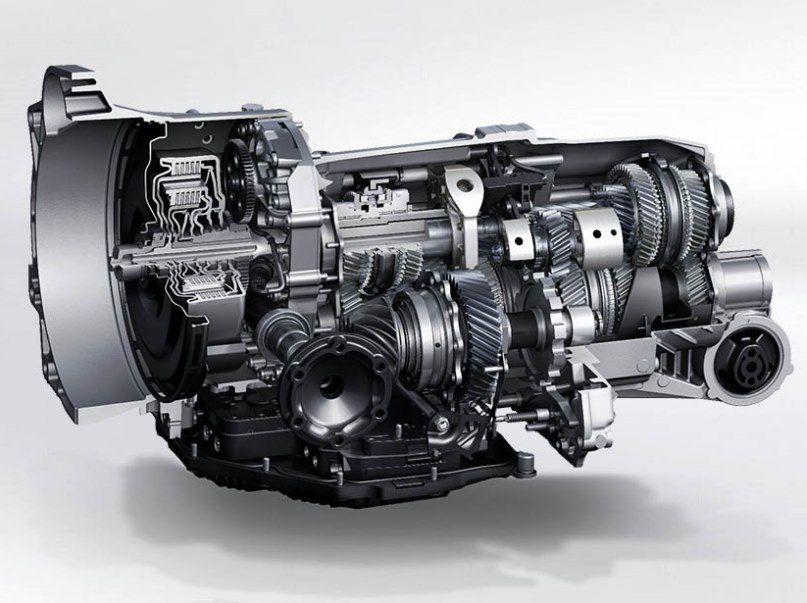Recent Articles
Popular Makes
Body Types
5 Common Car Transmission Types
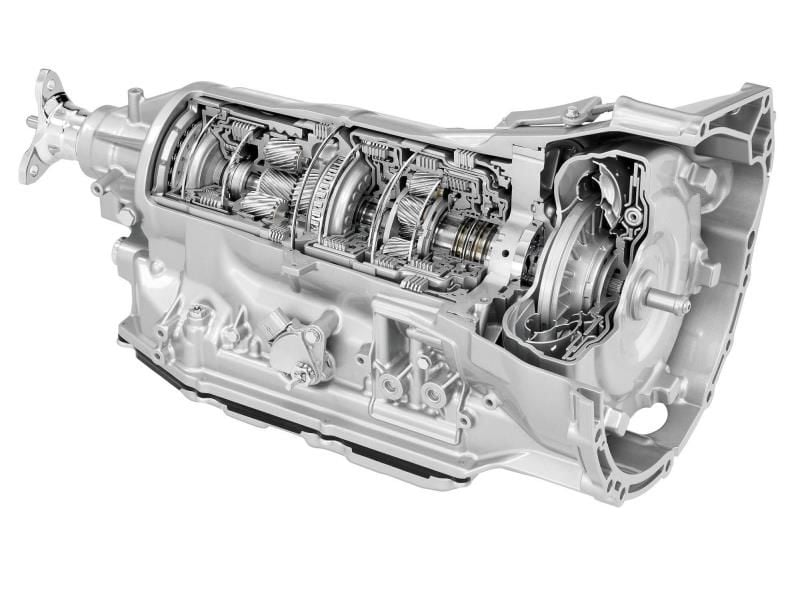
cartransmissiontypes
In the good “old days” — way back in 1985 — new cars and trucks were offered with a choice between a manual and an automatic transmission. The decision was uncomplicated: Everyone knew that a manual gearbox was quicker, more efficient and less expensive than its automatic counterpart.
Those simple days have vanished. The microcomputer, and improved manufacturing processes, have completely changed the technical approach to changing gears – for better and for worse – and today’s showrooms are stocked with vehicles offered with nearly a dozen different types of transmission, each offering unique approaches to making the driving experience sportier or more economical.
MANUAL TRANSMISSION
Also known as: Stick shift, manual gearbox, manny tranny
The classic stick-shift transmission utilizes a third pedal, or clutch, which disconnects the engine from the gearbox so a new gear may be selected. Manuals haven’t changed much over the years; though the number of gear ratios have increased (most manuals have five or six speeds, and some have seven) and been altered (for, say, better mid-range response or increased top-gear economy), the greasy bits remain mostly unchanged. The number of cars with a manual transmission is rapidly declining as more automatics become standard equipment at no additional cost – and while delivering better performance, though enthusiasts will continue to argue that a stick shift provides a superior driving experience.
NERDY TRIVIA: You don’t actually shift gears in a manual transmission. Each pair of gears that provides a given ratio are always enmeshed; moving the shift lever locks different gear pairs to the output shaft, changing the selected gear ratio.
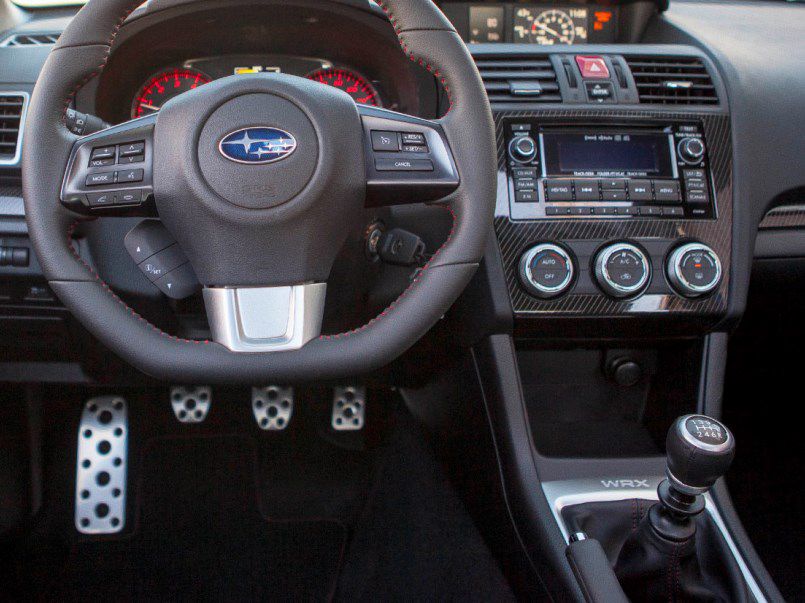
TORQUE CONVERTER AUTOMATIC
Also known as: Conventional automatic, hydraulic-planetary transmission, wet transmission
This is the most common type of automatic transmission. Instead of a clutch, this transmission uses a hydraulic torque converter, a device that uses fluid (transmission oil) to transmit energy so that the engine can idle while the car is stopped. Torque converters allow the engine to spin at a faster rate than the transmission, thus providing increased power for acceleration. Most modern automatics use a lock-up torque converter that connects the engine directly to the transmission at steady speeds to increase fuel economy. Gear changes are accomplished with a planetary (aka epicyclic) gearset. While older transmissions used a complicated (and fascinating) system of hydraulic valves to control the transmission, today’s automatics use electronic controls and electric solenoids for more precise response, multiple shift profiles (i.e. economy and sport modes), and manual gear selection.
Some automakers have experimented with replacements for the torque converter while retaining conventional planetary gearing. Mercedes‘ Multi Clutch Transmission (MCT), found on some high-performance AMG models, uses an automated clutch in place of the converter. Mazda‘s SKYACTIV transmission employs a variation on the lock-up torque converter with a multi-plate clutch that locks the engine to the transmission almost immediately after the car starts moving.
NERDY TRIVIA: The first conventional mass-produced automatic was General Motors‘ Hydra-Matic Drive, introduced in 1940 Oldsmobiles and Cadillacs, though its fluid coupling wasn’t a true torque converter.
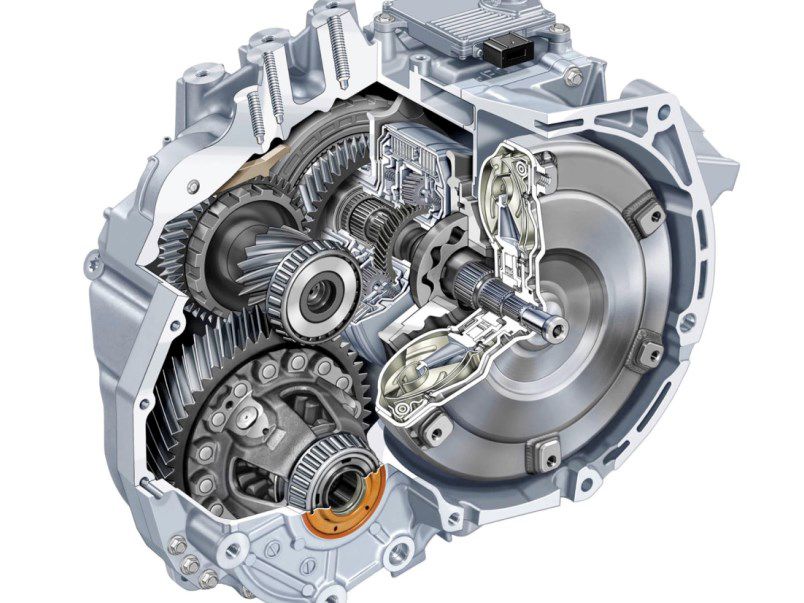
CONTINUOUSLY VARIABLE TRANSMISSION
Also known as: CVT
The CVT differs from other transmissions in that it does not use actual gears. Though there are several types of CVTs, the most common uses a pair of pulleys connected by a belt or chain. Each pulley is made from two cone-shaped halves; the cones can move closer to or farther away from each other, which causes the belt to ride lower or higher on the pulley, changing the gear ratio (much as a ten-speed bicycle uses different-sized sprockets). Unlike regular transmissions, CVTs allow the engine to spin at any speed, regardless of how fast the car is moving. This allows the engine to run at optimum speed for either power or fuel economy, and provides smooth, shift-free driving, though the sound of the engine revs rising and falling freely can be unnerving to those used to conventional transmissions. Many CVTs use a torque converter or an automated clutch to disconnect the engine from the transmission when the car is stopped. Nissan, Subaru, and Honda are among the automakers using CVTs across their product lines.
NERDY TRIVIA: A less-than-positive reception from critics has led automakers to program their CVTs to awkwardly mimic the shifting of conventional automatics, particularly when “downshifting” for power.
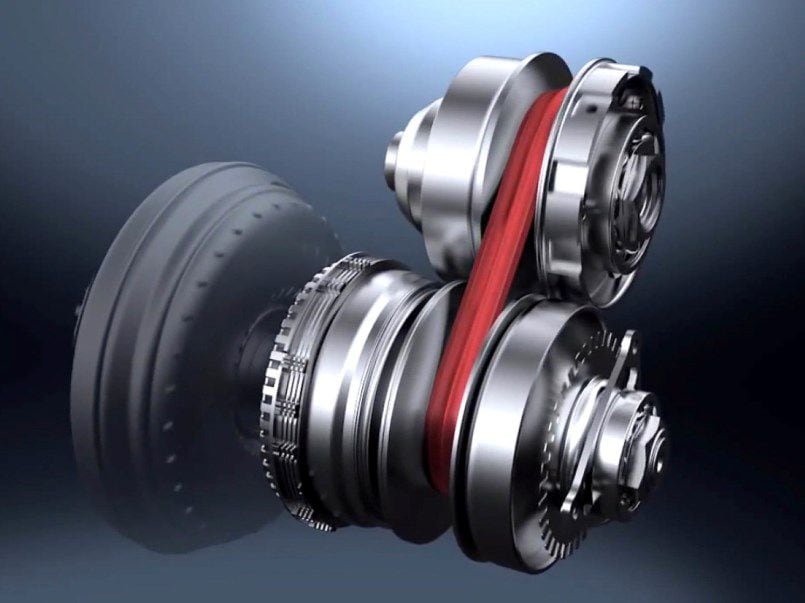
SEQUENTIAL MANUAL TRANSMISSION
Also known as: SMT, sequential-manual gearbox (SMG), automated manual, auto-manual
The sequential manual was designed to provide the direct connection of a manual transmission (as opposed to a fluid coupling such as a torque converter) with the convenience of an automatic. Despite its name, the SMT is not really a manual; it uses the same internal components as a manual transmission, but the clutch and gear shifting are controlled automatically (and SMT-equipped road cars do not have a clutch pedal). SMTs are most commonly found in racing cars and some high-end performance cars. The chief disadvantage is that, like a manual transmission, the SMT must cut power during gearshifts, which can result in jerky acceleration. Issues with the SMT led to development of the dual-clutch transmission, or DCT (see below).
NERDY TRIVIA: Though SMTs are most commonly found on high-end European exotics, the 2008-15 smart fortwo also featured a five-speed SMT (one of the most highly criticized elements of the car).
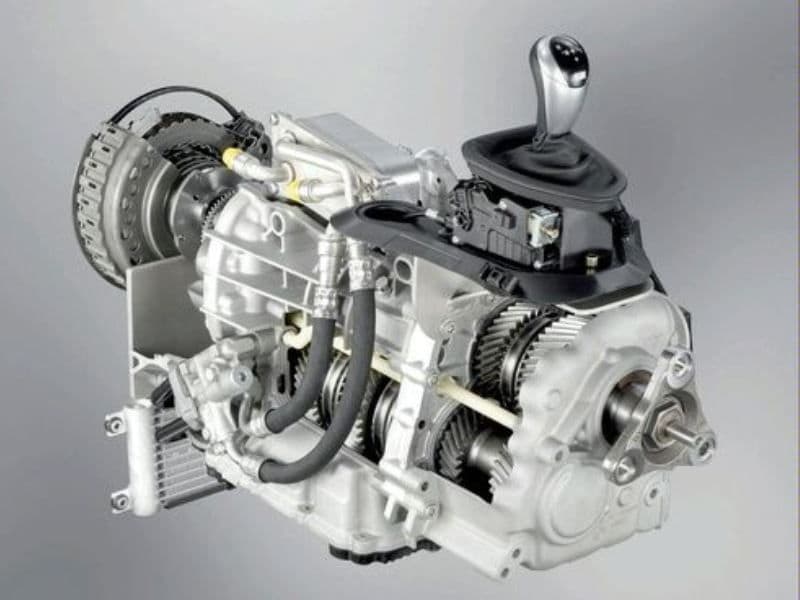
DUAL CLUTCH AUTOMATIC TRANSMISSION
Also known as: DCT, twin-clutch transmission, and various trade names such as Direct-Shift Gearbox/DSG (Volkswagen), S Tronic (Audi), PowerShift (Ford), PDK (Porsche), EcoShift (Hyundai)
The dual-clutch transmission is an outgrowth of the sequential manual (see above) and is designed to eliminate the hesitation during gear changes. The DCT is essentially two transmissions, one for odd-numbered gears and one for even-numbered gears. When the car starts off, the odd transmission is in first gear, and the even in second gear; an automated clutch engages the odd transmission. When it’s time for a gear change, the clutch disengages the odd transmission and engages the even transmission; the odd tranny then pre-selects third. (Most DCTs have six or seven speeds.) DCTs provide near-instant gear changes with a direct (clutched) connection between the engine and the transmission. DCTs are automatic transmissions, but most allow for manual gear selection. Many experts regard the DCT as the ultimate performance transmission.
NERDY TRIVIA: Though developed as a performance transmission, slick-shifting DSGs are also used in many economy cars, including Volkswagen’s diesel-powered TDIs, Hyundai’s Sonata Eco, and Ford’s Focus and Fiesta.
